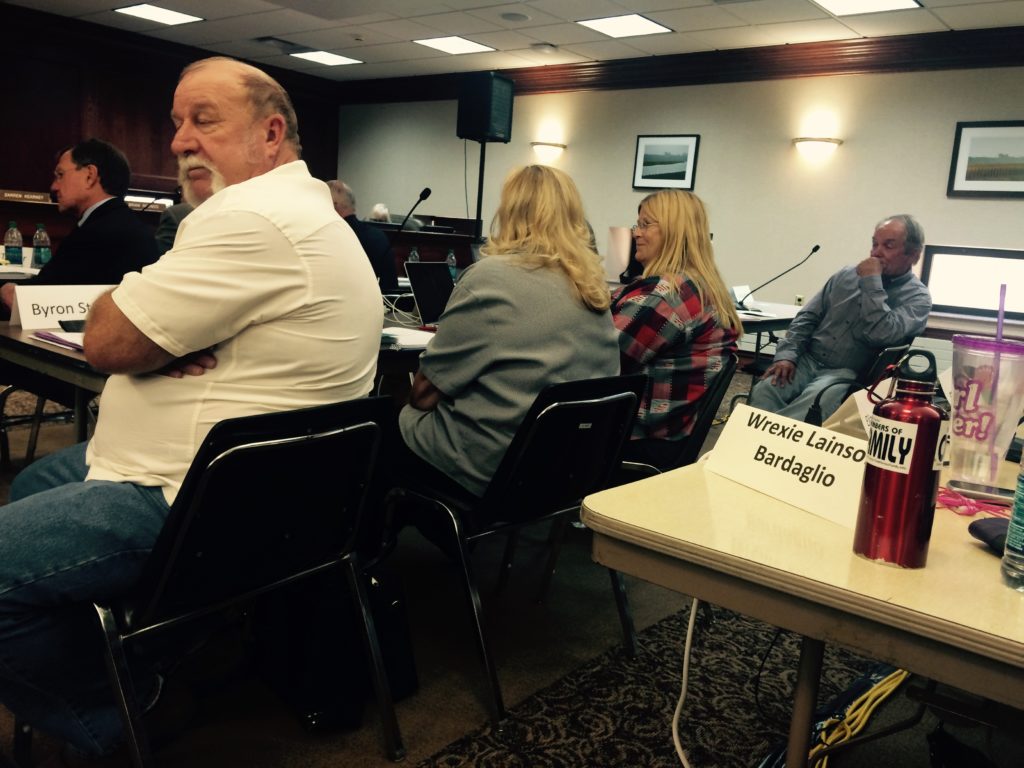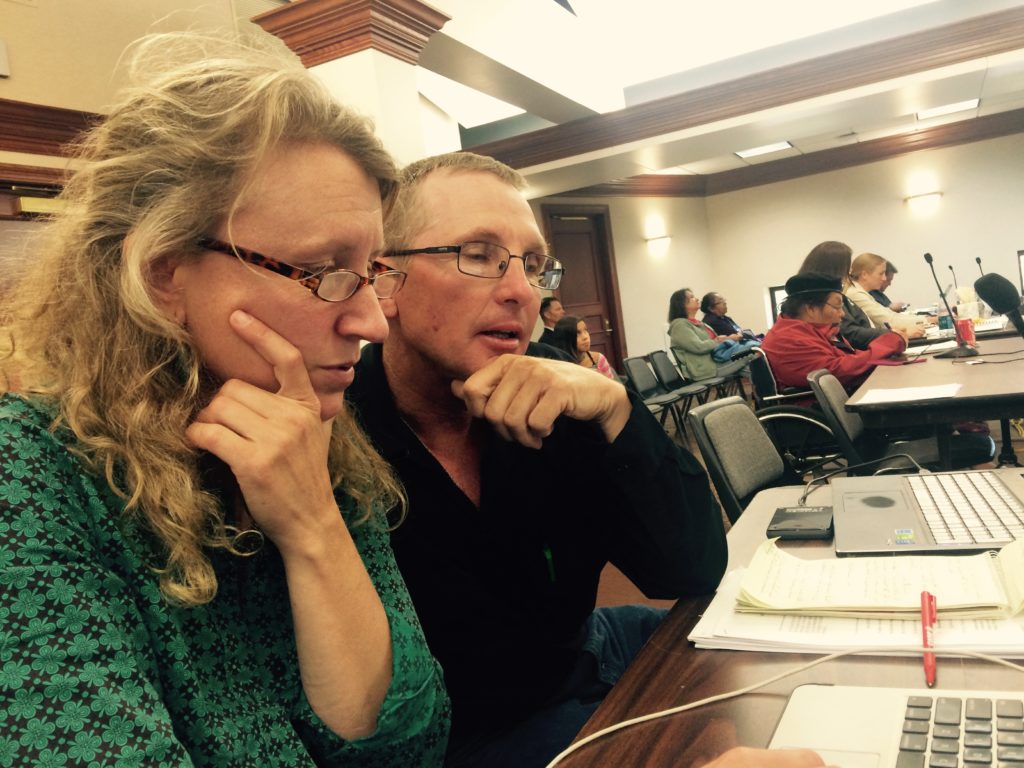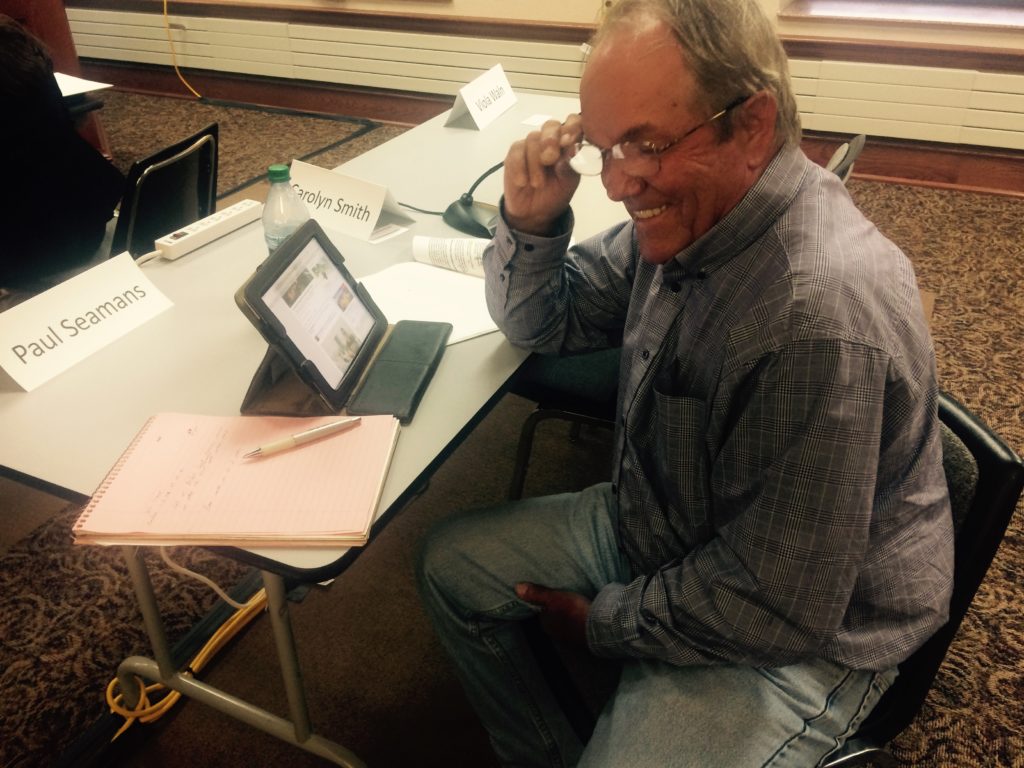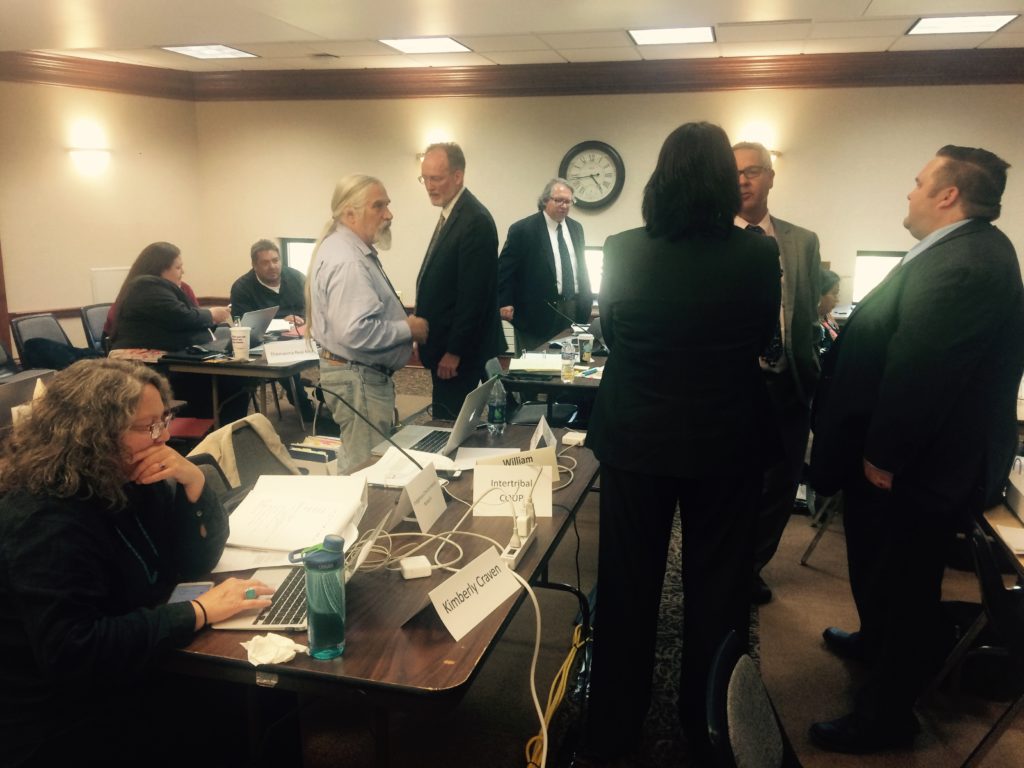We have just concluded the third day of testimony on the Keystone XL permit certification here in Pierre, South Dakota. It’s been a bit of a ride, to say the least – rules seem to change by the hour, TransCanada pulled a witness soon after intervening parties started asking him questions, and at times the room has been quite heated (and not due to being on the fourth floor of the Capitol building in July – it’s been testy in here).
Monday, parties gave their opening statements, and we posted our lawyers’ here. DRA pipeline champions John Harter and Paul Seamans have been here all week, along with many other long-time pipeline fighters:


One of the more interesting statements made by TransCanada’s lawyer in his opening was that, as TransCanada, “We acknowledge there have been some changes in circumstances.” Some of these “changes in circumstance” have come up the course of the past three days – lower oil prices and the potential lack of demand for the pipeline, for example. But there are many more changes, changes outlined by TransCanada itself in the “Tracking Table of Changes,” a list of 30 changes in the facts upon which the conditions of the permit are based. A lot of discussion in this room here, room 414 of the South Dakota State Capitol, have been around just how much the facts have changed, and how that affects TransCanada’s ability to continue to meet the permit conditions.
That is the core question at issue. Based on SDCL 49-41B-27, TransCanada has to “certify” Keystone XL can still continue to meet the “conditions upon which the permit was issued.” At TransCanada’s request, the PUC commissioners ruled “conditions upon which the permit was issued” meant the Amended Permit Conditions (that start on page 25 of the permit). So despite the fact that the broader conditions have clearly changed, by TransCanada’s own admission, the scope of this hearing was limited to solely whether or not TransCanada can continue to meet the permit conditions.

Which has really generated a lot of consternation and confusion here, confusion which came to a head yesterday when TransCanada withdrew one of its own witnesses after intervenors started asking questions. So in the middle of cross examination, two days into the hearing, the question about whether or not their witness could even speak to those permit conditions was answered abruptly and very strangely with the striking of all his testimony.
The witness at issue here was David Diakow, VP of Commercial, Liquids Pipelines for TransCanada. His testimony was to be entirely about the demand for the pipeline. Intervenors started asking questions about whether or not there were contracts signed for the pipeline and whether or not this pipeline was truly needed. TransCanada’s answer was, the pipeline would be built regardless of need (we’ll do this whether or not we need to!) and as soon as the question was asked about contracts, the room descended into chaos.
Despite Diakow being their own witness, TransCanada tried to make the case that any questions about demand and need and contracts were “outside the scope of this hearing.” Despite the fact that TransCanada is the party in this case that brought this issue into consideration, the Public Utilities Commission decided the facts (the very facts the permit conditions are based on) aren’t up for discussion! The result was, then, Mr. Diakow’s testimony was taken out. Completely.
Better to not talk about the lack of need for Keystone XL, apparently.

Today’s hearing has been somewhat quieter, with TransCanada calling Heidi Tillquist, the contractor TransCanada hired to evaluate the risk Keystone XL poses to “human and environmental resources.” She has, so far, deflected most questions, and TransCanada’s lawyers continue objecting to anything they see as being outside the scope of her expertise. Which for someone responsible for evaluating Keystone XL’s risk, seems to be quite a lot. Her quote of the day had to do with mancamps, a response to one of the Yankton Sioux Tribe’s lawyer’s question about whether or not they were included in any risk assessment: according to Tillquist, no, because “Mancamps are not populated areas.”
Not populated areas? They’re chock full of people for months on end, and if she meant the areas they’re in are not populated, two of those camps go within five miles of schools! This state may not be densely populated. But it’s populated, with people who deserve to have the impacts of this pipeline on their lives and the lives of their children evaluated. But that apparently hasn’t happened. Because, they’re not populated areas.
The day ended with argument back and forth about whether the public in South Dakota should or should not get to know the places where the highest risks are from this pipeline. TransCanada doesn’t think we need to know. We disagree; clearly farmers and ranchers and water drinkers need to know whether or not they are at risk! We need to know just how much we are being put at risk for the benefit of TransCanada’s private pipeline profit.
Apparently the PUC Commissioners don’t think we need to know. So it remains confidential.
And we just have to continue hoping on a wing and a prayer that our water, land, and lives aren’t at risk.
